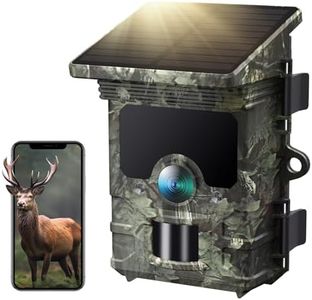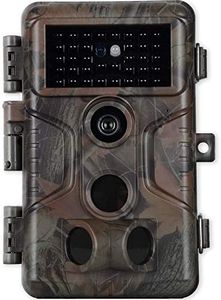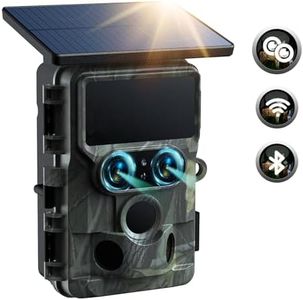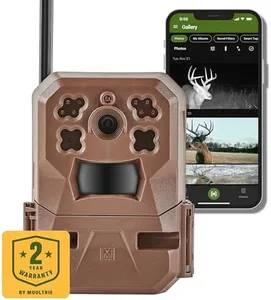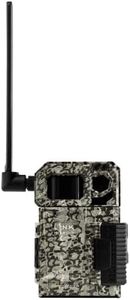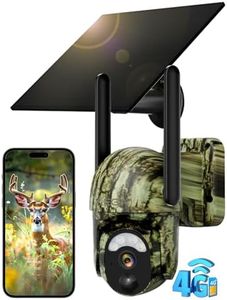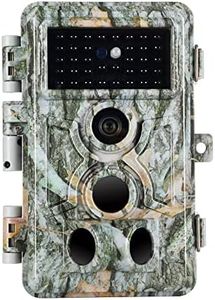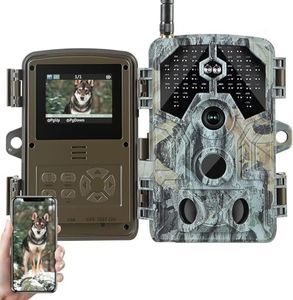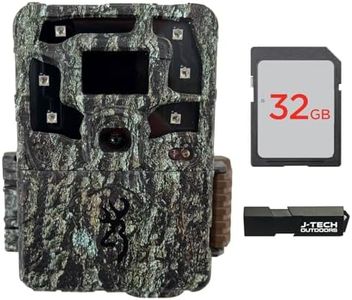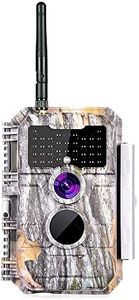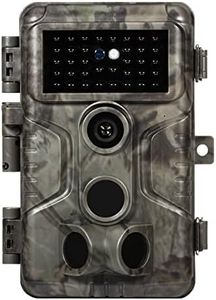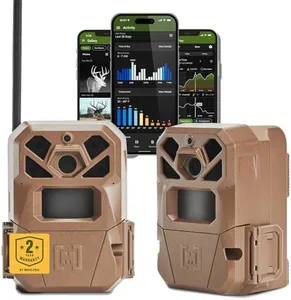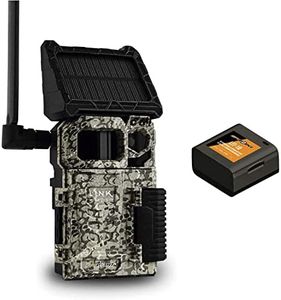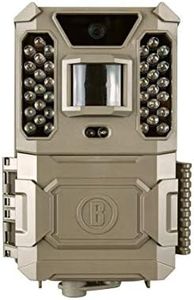We Use CookiesWe use cookies to enhance the security, performance,
functionality and for analytical and promotional activities. By continuing to browse this site you
are agreeing to our privacy policy
10 Best Wildlife Cameras
From leading brands and best sellers available on the web.Buying Guide for the Best Wildlife Cameras
When choosing a wildlife camera (also known as a trail camera), your main goal is to capture photos or videos of animals in their natural habitats without disturbing them. To select the best camera for your needs, consider how and where you want to use it—whether that's for night monitoring, spotting fast-moving animals, or simply watching for interesting wildlife near your home. Understanding the main features will help you find a model that's easy to set up and gives you the results you want. Below are some of the key features to consider and what to look for in each one.Image ResolutionImage resolution indicates how clear and detailed the photos or videos will be, usually measured in megapixels (MP) for photos and in 720p/1080p/4K for video. Higher resolution means sharper and more detailed images, which can help with identifying animals, especially smaller creatures or those at a distance. For simple spotting or nearby observation, a camera with moderate resolution (8-12 MP) will do the job, while for detailed research or print-quality photos, consider higher resolutions (16 MP and above). Match your choice to how much detail you want and whether you plan to print, crop, or zoom in on your shots.
Trigger SpeedTrigger speed is the time it takes for the camera to detect motion and start capturing an image after an animal is detected. A quicker trigger speed (usually measured in seconds or fractions of a second) is important for photographing fast-moving animals such as deer or birds. Slower trigger speeds may be fine for slower or stationary animals. If you aim to capture action shots or elusive, quick wildlife, look for a camera with a trigger speed under 0.5 seconds; if your main interest is larger, slower-moving animals, then up to 1 second can be sufficient.
Detection RangeDetection range is how far the camera’s sensors can 'see' movement and trigger a photo or video. A longer detection range allows the camera to catch animals that are farther away, which is useful for covering a wide area or for shy animals that don’t come close. Detection ranges can be short (up to 40 feet), medium (40-70 feet), or long (over 70 feet). Choose a longer detection range for open areas or wide fields, and a shorter one for smaller, confined spaces like garden monitoring.
Night Vision CapabilitiesNight vision capabilities determine how well the camera can capture images in the dark, usually using infrared LEDs that are invisible to animals. The range and quality of night vision can vary; some cameras produce very clear black-and-white (or even color) night images, while others may be grainier. If you expect to monitor mostly nocturnal animals, pay attention to the camera’s night vision range and image clarity. Pick a model with good reviews for night shots if this is a priority.
Battery Life and Power OptionsBattery life is how long the camera can operate before needing new batteries or recharging. If you plan to leave the camera outside for days or weeks, longer battery life is essential. Cameras with low power consumption and support for additional power options (like solar panels or external battery packs) can be a good choice for remote or hard-to-reach locations. Evaluate your setup: for home gardens, shorter battery life may be fine, but for remote areas, longer life saves time and hassle.
WeatherproofingWeatherproofing refers to how well the camera can withstand the elements, such as rain, heat, and cold. Good weather protection is crucial if you plan to use your camera outdoors for long periods or in extreme conditions. Look for cameras rated as 'weatherproof' or 'water-resistant,' and check if they have robust casing and sealed compartments to prevent water or dust from entering. This is more important for harsh environments and less of a concern if the camera is used under some cover.
Storage OptionsStorage options tell you how and where your photos and videos are saved, often via SD or microSD cards. Larger storage capacity lets you capture more images before having to check or clear the memory. Consider how often you’ll check your camera—bigger cards (32GB and up) are useful for long periods without maintenance, while smaller cards are fine for more frequent checking. Some cameras also offer wireless transfers or cloud storage, which may add convenience.
Setup and UsabilitySetup and usability describe how easy it is to get the camera up and running, change settings, and check your photos. Simple, intuitive interfaces are better if you’re a beginner or want hassle-free operation, while advanced settings can be helpful if you want more control. If you're new to wildlife cameras, opt for a model known for user-friendly menus and easy setup, and consider reviewing sample photos or tutorials before buying.
